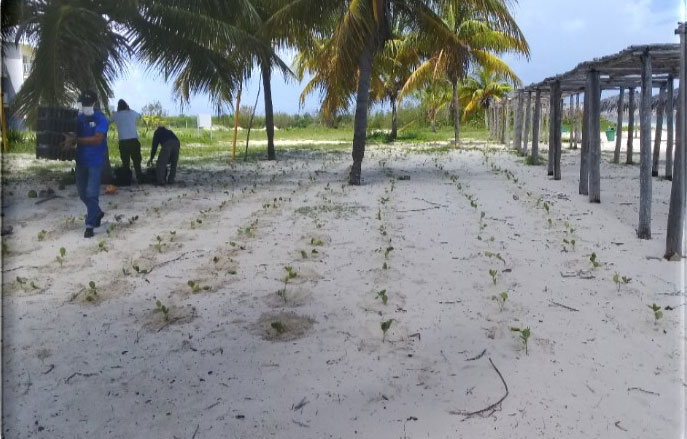
CIEGO DE AVILA, Cuba, Jun 10 (ACN) The planting of native plants on the dunes formed after the dumping of sand, made it possible to reduce erosion in more than 1,300 square meters of beach in the Jardines del Rey tourist destination, north of Ciego de Avila, during the period 2018-2020.
According to a report by the Provincial Delegation of the Ministry of Science, Technology and Environment (CITMA), it was also possible to reduce the presence of exotic species in coastal dunes, with the aim of reducing the presence of invasive plants that affect biodiversity.
Currently, the Centro de Investigaciones de Bioalimentos (CIBA) is promoting a project aimed at reproducing native plants for dune ecosystems and hotel gardening, in order to reestablish native vegetation.
Actions for the protection of the dunes are included in the Cuban State's Plan to confront climate change and, in the particular case of Jardines del Rey keys, they also respond to the interest in achieving sustainable development of the leisure industry.
The Biofood and Biofactory centers in the territory also project the in vitro reproduction of beach rice to guarantee plant coverage in coastal areas that benefit from sand dumping and the elimination of invasive species.
Likewise, the use of temporary immersion bioreactors will make it possible to obtain a greater number of plants, free of pathogens, in less time and space, according to Danay Rodríguez Ramos, Master in Agricultural Sciences, associate researcher at CIBA.
This in vitro reproduction technique stimulates plant growth by means of abrupt changes in feeding, through an automated system that immerses the plants in a flask with culture medium for determined times, and then returns them to the container where they develop, explained the scientist.
Beach rice has risumatous roots that favor the accumulation and retention of sand, thus strengthening the structures of the dunes to minimize the impact of waves and wind, and erosion induced by anthropogenic factors.
The use of agroecological techniques will make up for the deficit of imported inputs and reduce contamination of this ecosystem, where birds, insects and reptiles coexist, with survival dependent, to a large extent, on the proper management of the area and the development of coastal flora.
Based on the effectiveness demonstrated in other plantings, earthworm humus will be used as fertilizer and efficient microorganisms will be introduced, on an experimental basis, as growth biostimulants and sun fertilizers for the dune plants, with the objective of advancing in the reestablishment of the coastal vegetation.
Sidebar

 Agencia Cubana de Noticias
Líder en información nacional
Agencia Cubana de Noticias
Líder en información nacional








Nos reservamos el derecho de no publicar los comentario que incumplan con las normas de este sitio